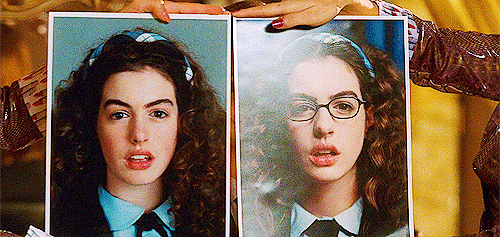
The Princess Diaries / Giphy
If this were a television show, I’d be pulling up to an unassuming student’s school right now in a crew van. With my cameramen right behind me, I’d jump out of the car, hustle to the classroom, and tear the poor kid’s résumé from his hand. “We have a lot of work to do,” I’d say gravely into the camera.
But this is just a blog. So, instead of doing the whole song and dance like it’s the makeover episode of America’s Next Top Model, we’re going to take a look at two high school student résumés, critique them, fix them, and make them worthy of those “before and after” photos.
Without further ado, let’s meet our two contestants.
Ellen
Ellen is one of those rare students who just knows what she wants to do with her life—art—and she leaves everything else on the backburner. She’s interested in studio art and she’s great at it and she wants to go to art school, even though her grades and test scores aren’t stellar. Let’s check out her résumé.
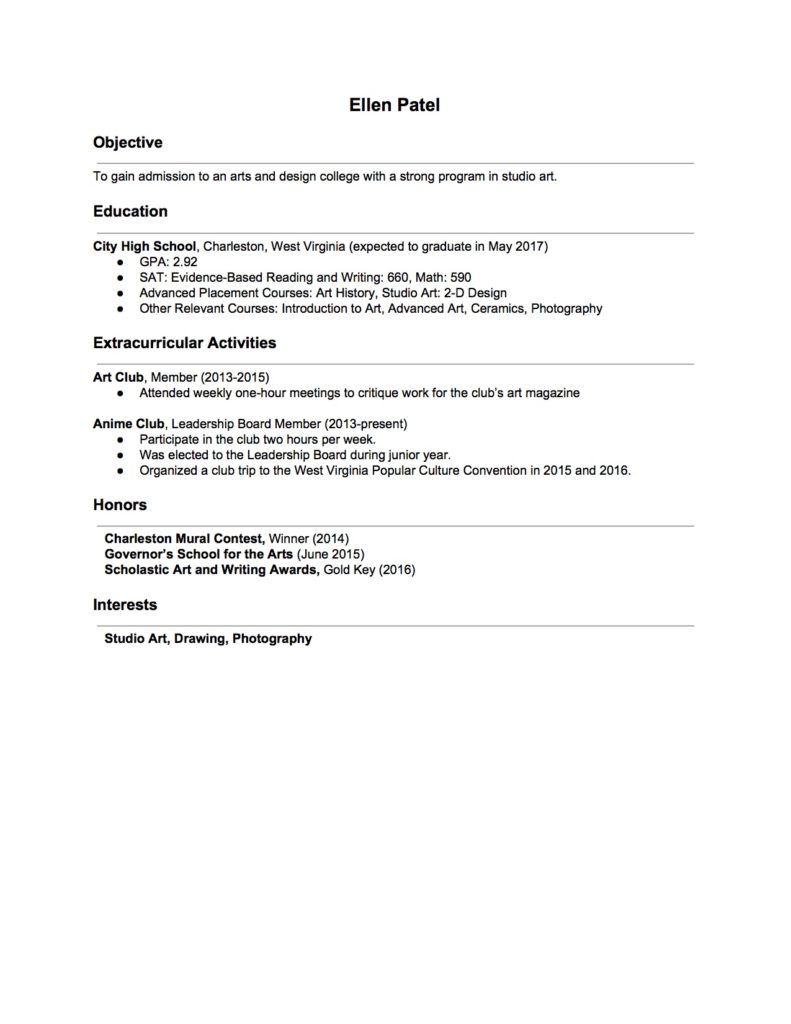
Let’s start with the pros of Ellen’s résumé:
- Studio art jumps off the page as a clear talent of Ellen’s. While not every résumé needs to have an objective section (some people believe the section is outdated), it is perfectly fine to leave it there. In Ellen’s case, her interest in art is obvious based on the rest of her résumé. That thread of extracurricular activities and honors shows her preparation for an arts and design school.
- Her relevant coursework reaffirms her preparation for an arts education. The advanced placement courses and relevant coursework that she lists fit perfectly with the focus on arts and design school.
- Her duties and leadership roles in each of her after-school activities is well explained. She avoids person-first language (I, we, they, etc.) and instead concentrates on using strong action verbs. She gives the dates of her participation so that readers know when and for how long she participated in each activity.
- The résumé is formatted into separate sections. Readers can skim it to easily find the information they need.
What about the cons?
- Her contact information is missing.
- There is unnecessary emphasis on her B- average. While many students list their GPAs on their résumés, some students who struggle to earn a GPA over a 3.0 may want to use the space to emphasize their other talents, not their grades; listing a GPA in a résumé is just repeating the information in your transcript, after all.
- Her information is not listed in reverse chronological order. On a résumé, your most recent activities and honors should come first.
- The interests section is repetitive based on the other information in the résumé. We already know that Ellen likes art; this section isn’t telling us anything new.
How can Ellen make her résumé better?

TRANSform Me / VH1
- Provide her contact information in the heading.
- Leave off her GPA. Ellen’s overall GPA is below average, so it should not be such a focal point on her résumé. With that being said, if she has improved her GPA dramatically as an upperclassman or if she has a high GPA in her visual arts classes, she might decide to showcase that (e.g., “Senior GPA/Overall GPA” or “Visual Arts GPA/Overall GPA”).
- Take advantage of the white space to list activities besides art. While Ellen does a good job showing her passion and talent for art, we can assume that she spends some time doing other things, too. It is okay to include something on your résumé even if it doesn’t seem prestigious; it shows you are well-rounded and human. Does Ellen work or participate in an activity outside of art? If she does (she should never make things up), she should showcase it.
- List her activities in reverse chronological order.
- Explain what some of her honors mean. Not every state has a Governor’s School for the Arts, for example, and so it would be helpful to provide a description of the program. As she elaborates on her experiences, her résumé will also grow in length.
- Choose either the interests section or the objectives section. Currently, both sections are accomplishing the same thing: They show the reader that Ellen is interested in art. It’s repetitive.
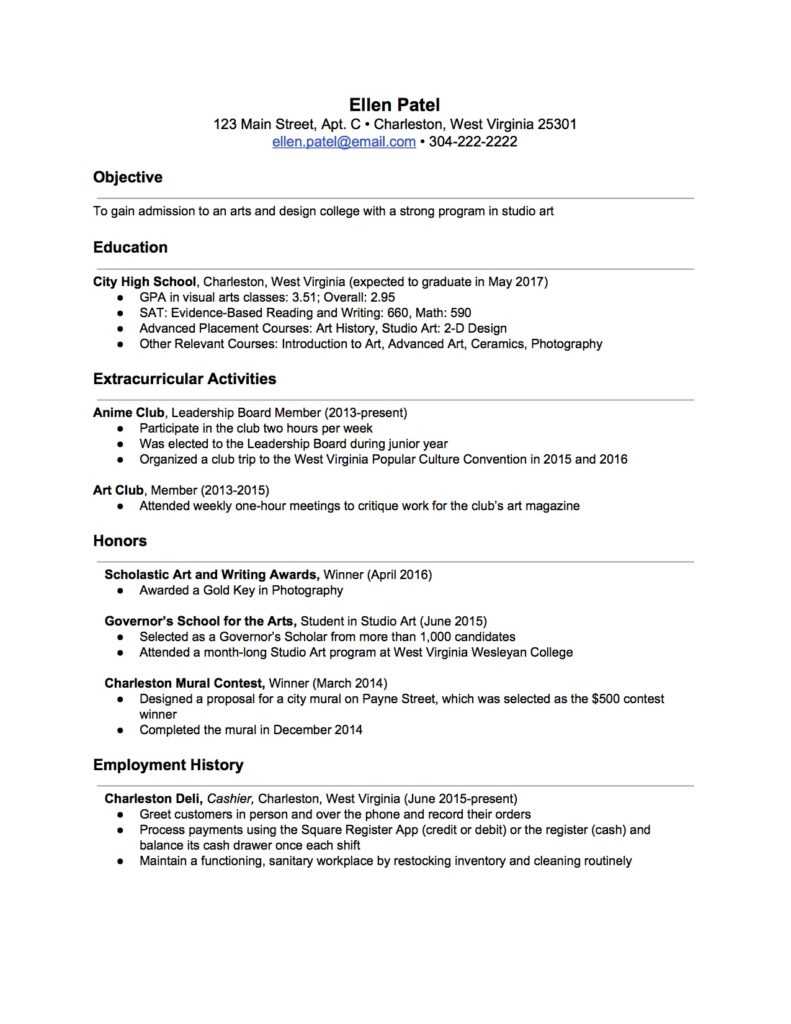
So, if this were a television show about makeovers, I’d be fawning over this résumé transformation right now; I might even throw it a big reveal party. Nice job, Ellen!
Diego
Diego studies hard to get into a good college. He’s heard that competitive college applicants are often well-rounded applicants, and he’s made an effort to get involved in volunteer work, clubs, and programs outside of school, even though he doesn’t have any leadership experience yet. How did he put all of that onto his résumé?
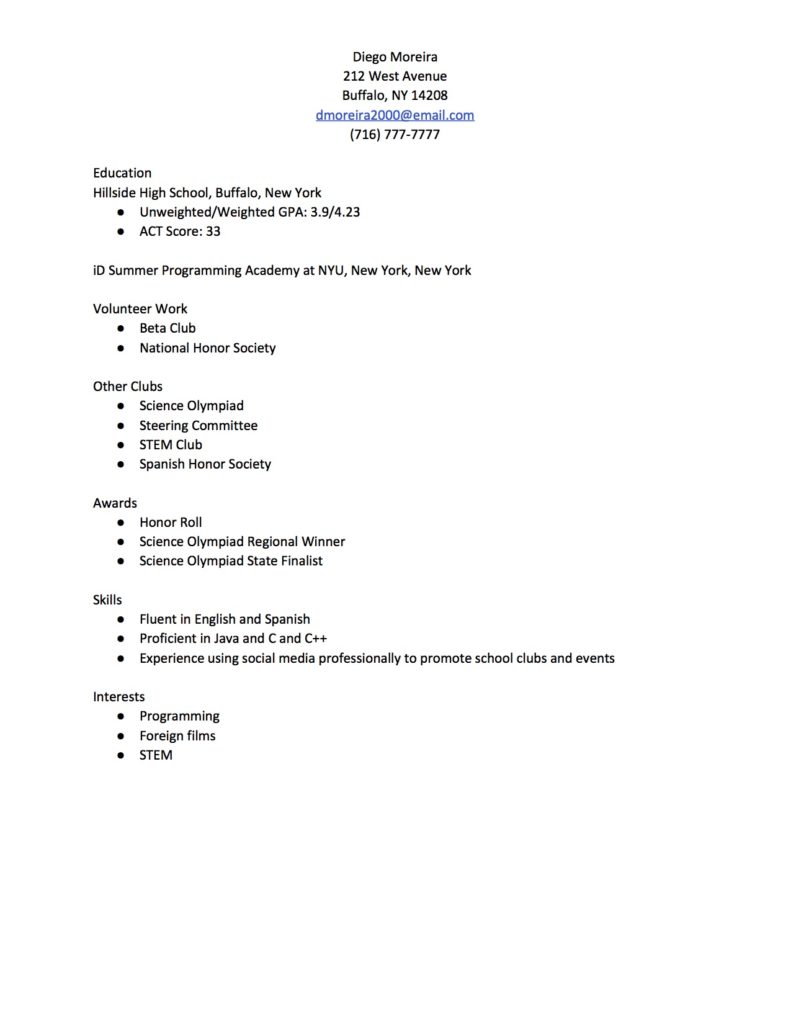
The pros:
- Contact information is easy to find in the heading.
- His education section is compelling. He considered the summer program he completed to be part of his education, which shows that he likes to learn outside of the high school classroom.
- Diego’s skills section is detailed. It adds more information about Diego that isn’t immediately obvious from the other sections.
The cons:
- Dates are unclear. When and for how long did Diego participate in each activity?
- Formatting could be more dramatic. The résumé is not particularly easy to skim because most of the font is the same size. Few things are in bold or italics.
- Valuable space is being used to make a laundry list of Diego’s activities rather than to explain them. What did his involvement in each club look like? How much volunteer work was he actually doing and with which organization?
What can Diego do to fix the issues?
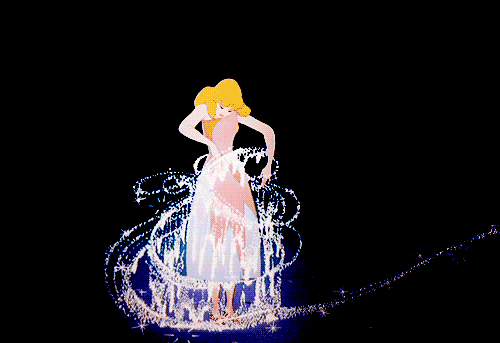
Cinderella / Giphy
- Elaborate on extracurricular activities. His activities read like a laundry list, but what did participation actually look like? What did each club do? What was the commitment like? Give a short description by using powerful action verbs (remember, verbs should be in past tense if the activity has been completed and present tense if the activity is ongoing).
- Reorganize certain achievements to make room for those descriptions. Consider combining the skills section with the interests section.
- Add dates. Let the reader know when and for how long you participated in the activity.
- Format the résumé so that there is more visual variety. Add bold text or underlines or change the size of the text to make the document easier to skim.
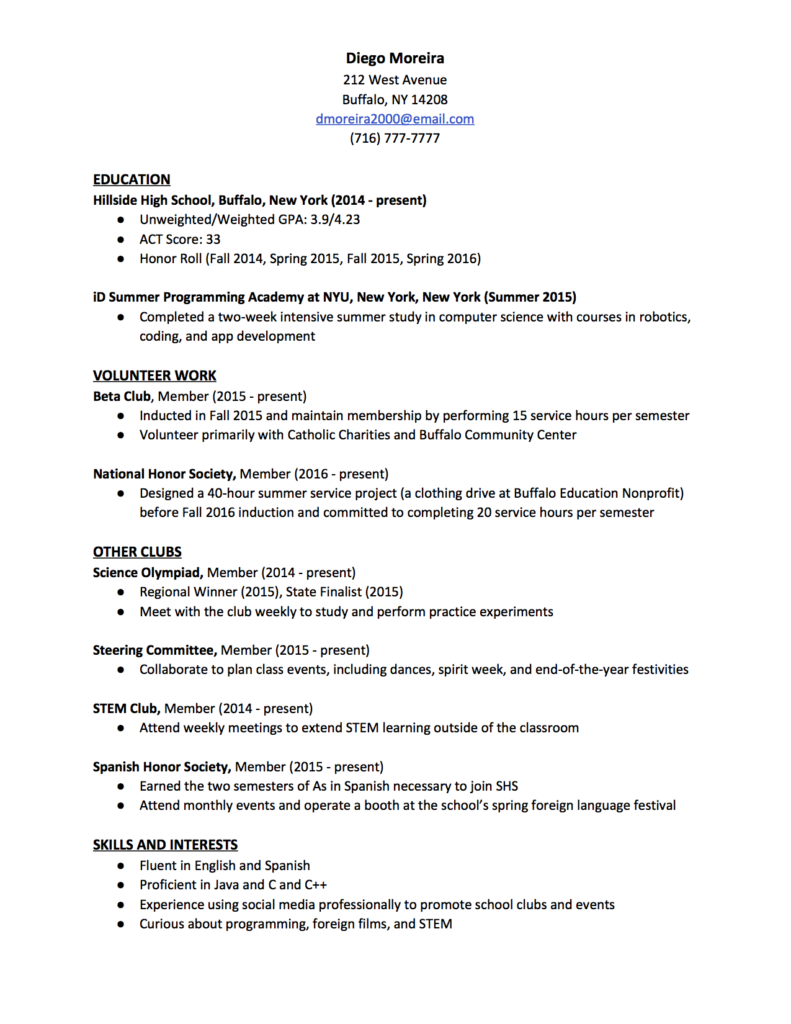
Voilà! There you have it, Diego. Your résumé went from duck to swan.
When you give your résumé a makeover, you ensure that you look your best self when colleges and after-school jobs come knocking. For more transformations, read “Extreme Makeover: College Résumé Edition.”
-
Thought-Provoking Books to Read this Summer
-
Going to College with Your High School Sweetheart
-
How to Talk to Your Parents about a Bad Grade
-
What Makes College So Different from High School?
-
Put Your Insomnia to Rest: Sleeping Well in Times of Stress
-
How to Win at the College Fair
-
The Relationship between Credit Card Debt and Credit Card Literacy
-
What Lessons Can “The Lord of the Rings” Teach Us?
-
Eight ACT Prep Tips for Overwhelmed Seniors
-
How to Respond to Cyberbullying
-
Finishing High School Strong: What to Do after You’ve Been Accepted
-
No-Fee Student Checking Accounts

